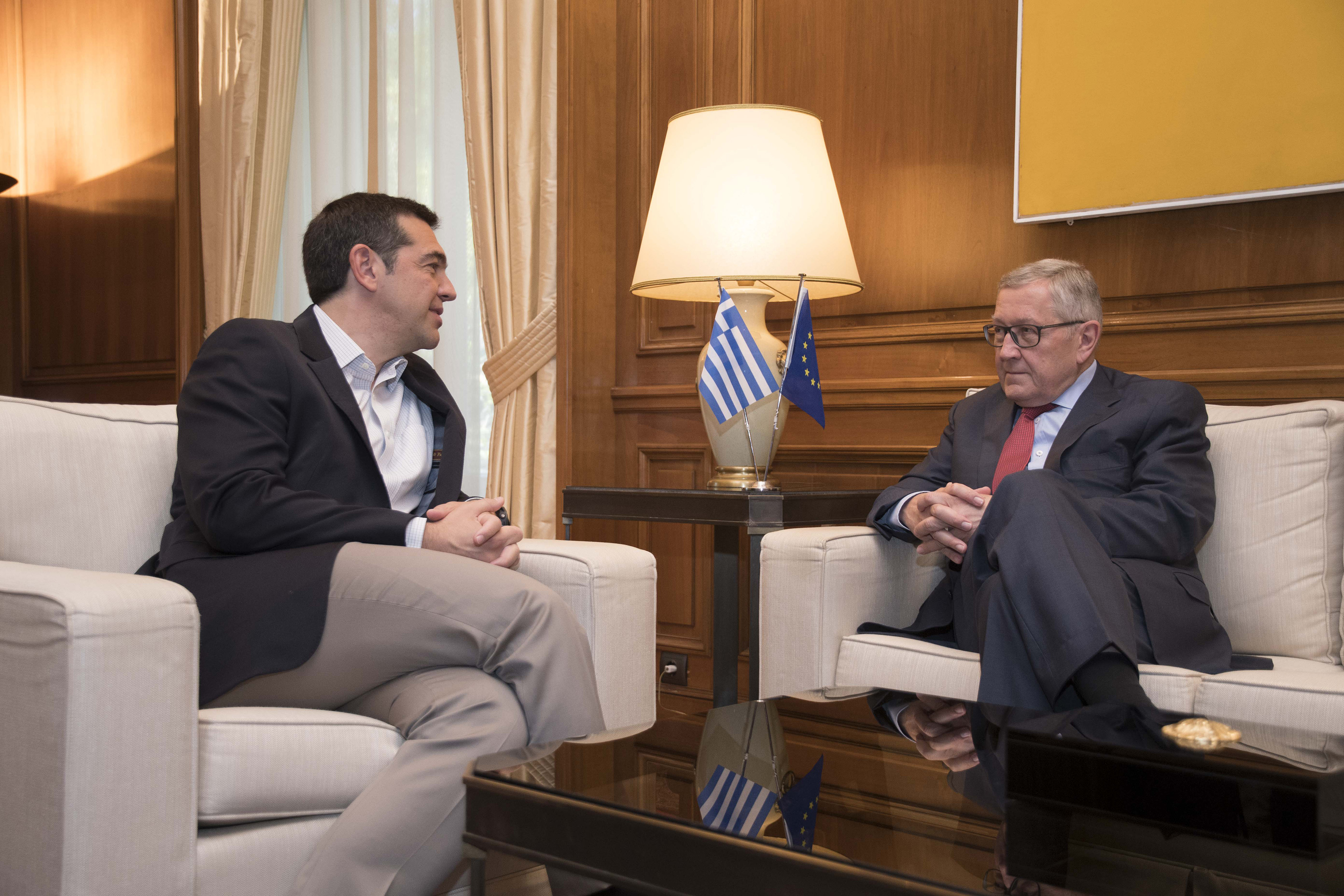Just one week before the crucial 21 June Eurogroup, where the Greek debt will be discussed, ESM chief Klaus Regling presented PM Alexis Tsipras and main opposition leader Kyriakos Mitsotakis with three different debt relief packages.
The three options were the final proposals hammered out after the recent G7 meeting in Canada. The Eurogroup Working Group met on 7 June in Paris to prepare the ground for a final agreement on 21 June.
Regling tabled three options. The first is a 15-year extension on the repayment of EFSF loans. The second is 25bn euros in cash plus a five-year extension on loan repayments. The third is 20bn euros in cash and a five-year loan repayment extension.
The second and third options are designed to increase Greece’s liquidity cushion, which currently is 15bn euros. Here, the government must commit itself regarding how the money will be used – to pay off IMF loans with high interest rates, to buy back the bonds held by the ECB and eurozone countries’ central banks, or both.
It should be noted that the aforementioned 25bn euros are what has been left over from the current 86bn euro loan contract. If they are not absorbed by Athens before the end of the bailout programme on 21 June, those funds will be lost.
Disbursement of the funds will be accompanied by strict terms, in the context of the post-bailout supervisory mechanism.
The above options, which were reportedly hammered out by Berlin, have the advantage that they need not be approved by the German parliament. Moreover, the IMF’s debt viability analysis will include a 15-year repayment scenario, which would make the debt viable.
Essentially, Greece’s debt obligations will be covered through 2022, without Athens being required to return to the markets if the conditions prove prohibitive.




